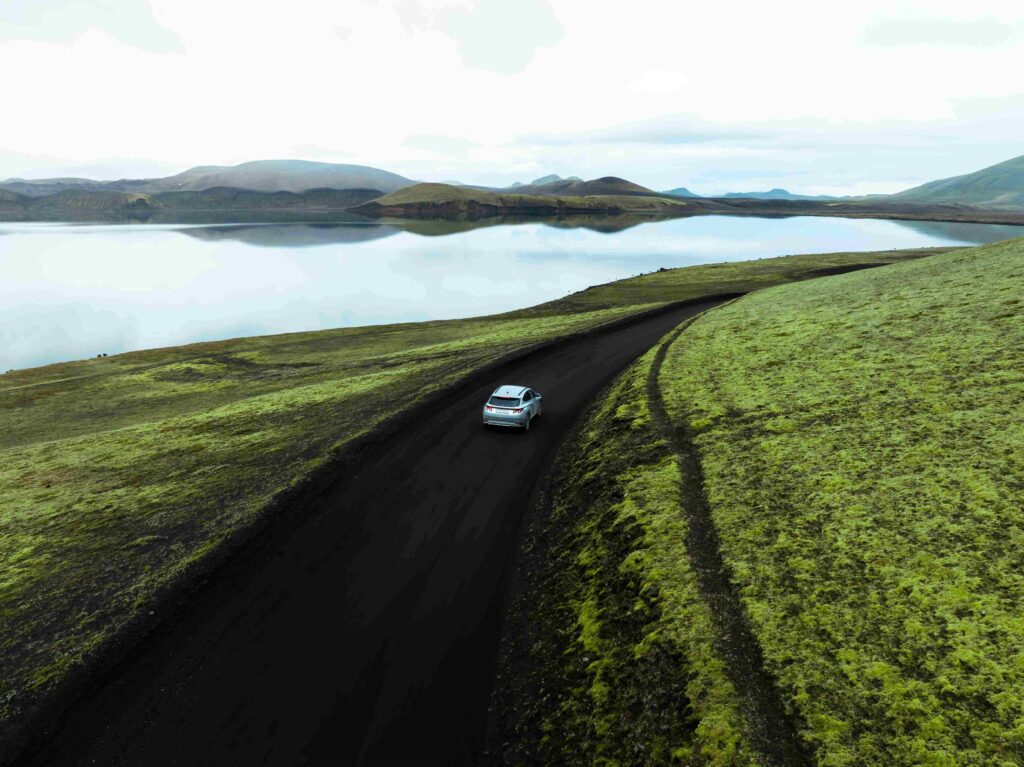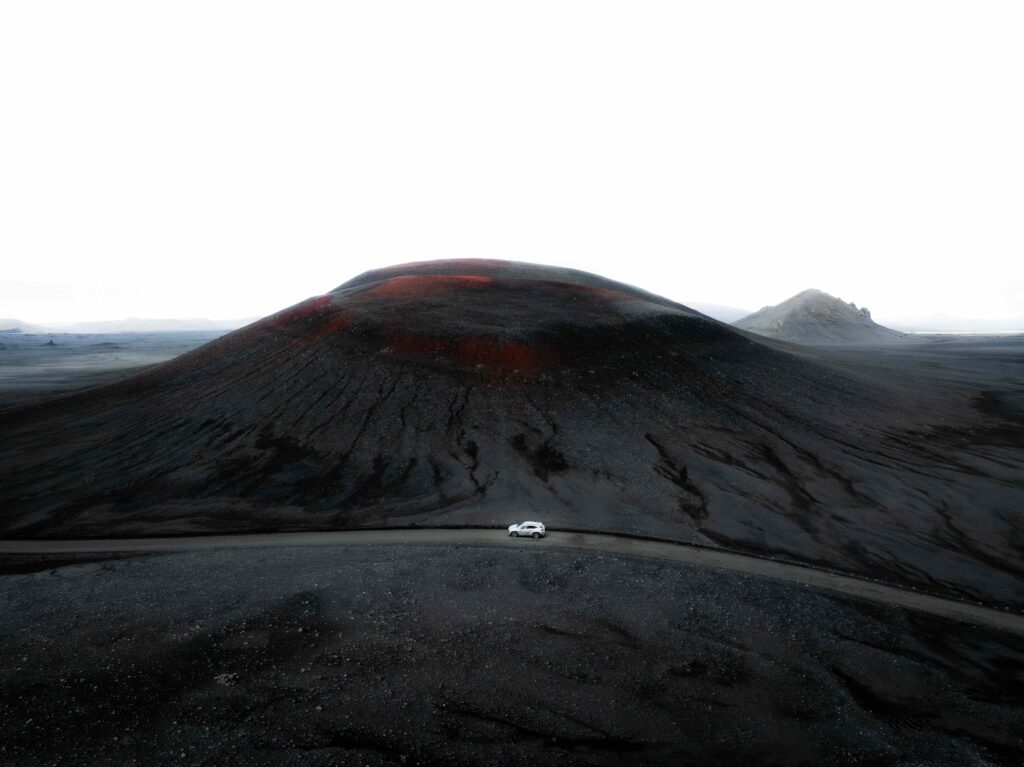Planning to explore Iceland by rental car? You’re in for an unforgettable adventure. From dramatic coastal roads and scenic mountain passes to geothermal wonders and F-roads, driving in Iceland offers the freedom to experience the country’s beauty on your own terms. But before you hit the road, it’s important to understand that driving here comes with its own set of rules and challenges—especially if it’s your first visit.
Whether you’re cruising along the Ring Road or heading into more remote areas, being prepared will help you stay safe and make the most of your trip. In this guide, we’ll walk you through 8 essential driving tips for first-time visitors to Iceland—covering everything from road conditions and weather to vehicle types and local laws. Let’s make sure your self-drive adventure starts off smooth.
1. Understand the Road Conditions
Iceland’s road conditions can change quickly and vary depending on location and season. The main Ring Road (Route 1) is paved and generally well-maintained year-round, making it the safest route for most travelers. However, many secondary and rural roads in Iceland are gravel, narrower, and less frequently maintained. These routes require slower speeds and extra caution to avoid damage to your rental car or loss of control—especially for first-time visitors.
In winter, driving in Iceland becomes even more challenging due to ice, snow, and reduced daylight. Slippery surfaces are common, and some roads may close entirely due to weather. Always check road.is for real-time road conditions before heading out, and make sure your rental car is equipped for Iceland’s winter driving environment.
2. Adhere to Speed Limits
Speed limits in Iceland are clearly posted and strictly enforced. In towns and cities, the limit is usually 50 km/h (31 mph), while rural gravel roads are set at 80 km/h (50 mph) and paved rural roads at 90 km/h (56 mph). Speed cameras are widespread—even in remote areas—and fines can be high. Always adjust your speed to match weather and road conditions, and keep a close eye on posted signs to ensure a safe and legal journey around Iceland.
3. Be Prepared for Changing Weather
Iceland’s weather is famously unpredictable, often shifting between sunshine, rain, wind, and even snow within a single day. For a safe driving experience, it’s essential to check the weather forecast frequently on vedur.is and be prepared for sudden changes. Always dress in layers and keep essentials like extra food, water, and a first-aid kit in your rental car.
If you’re visiting during winter, your rental car will be fitted with studded winter tires to handle icy road conditions safely. Strong winds, snowstorms, and poor visibility can affect travel plans, especially in rural or highland areas. Staying informed and prepared helps ensure your Iceland self-drive trip is both safe and memorable.

4. Watch Out for Wildlife
Sheep are a frequent sight along Iceland’s rural roads, and they often roam freely across open landscapes. It’s not uncommon for them to wander onto the road without warning, especially during the summer months. If you see one sheep near the roadside, slow down—others are likely nearby and may dart across unexpectedly.
Always stay alert when driving through farming areas or open countryside, and reduce your speed if animals are present. Hitting a sheep can cause serious damage to your vehicle and endanger both you and the animals. Being cautious and patient helps keep both drivers and wildlife safe on Iceland’s scenic routes. If you do happen to hit a sheep or lamb, be sure to let authorities know ASAP – you can contact them by dialling 112.
5. Respect One-Lane Bridges and Tunnels
Iceland has many one-lane bridges and a few one-lane tunnels, you will no doubt come across a few along the Ring Road. When approaching these, check for oncoming traffic and be prepared to yield. The rule is that the car closest to the bridge or tunnel has the right of way. Drive slowly and use caution, especially in poor visibility conditions.
6. Fuel Up Regularly
Gas stations can be sparse in rural areas, so it’s wise to fill up whenever you have the chance, especially if you’re heading into less populated regions. Most gas stations are self-service and accept credit cards. Keep an eye on your fuel gauge and plan your stops accordingly.
7. Know the Rules About Off-Road Driving and why F-roads aren’t the same
Off-road driving is strictly prohibited in Iceland to protect the fragile environment. Driving off marked roads can cause significant damage to the landscape and result in hefty fines. Stick to established roads and trails, and respect the natural beauty of the country.
There is come confusion with F-roads in Iceland, and some people may refer to them as ‘off-road driving’. F-roads in Iceland are rugged mountain roads marked with an “F” before the number—like F210 or F35. These routes lead to remote highland areas such as Landmannalaugar and Askja, offering dramatic scenery and adventure. However, they’re unpaved, rough, and often include steep terrain and unbridged river crossings, making them suitable only for 4×4 vehicles. They are typically closed during the winter months.

8. Plan for Emergency Situations
In case of an emergency, it’s crucial to know who to contact. The emergency number in Iceland is 112, which connects you to police, fire, and ambulance services. Make sure your phone is charged and you have a car charger with you. It’s also a good idea to share your travel itinerary with someone back home and check in regularly.
Choosing the right car to rent in Iceland for you.
Choosing the right rental car for your Iceland adventure is essential. Consider the type of roads you’ll be driving on and the time of year. For most of the year, a standard car is sufficient for the Ring Road and popular tourist routes. However, if you plan to explore the highlands or drive in winter conditions, a 4×4 vehicle is recommended. Renting a car in Iceland offers you the flexibility to explore at your own pace and discover hidden gems off the beaten path.
